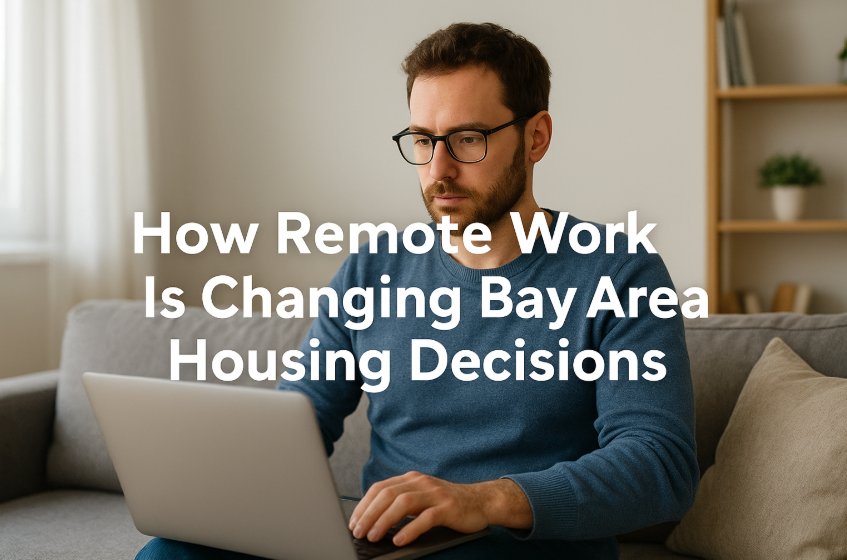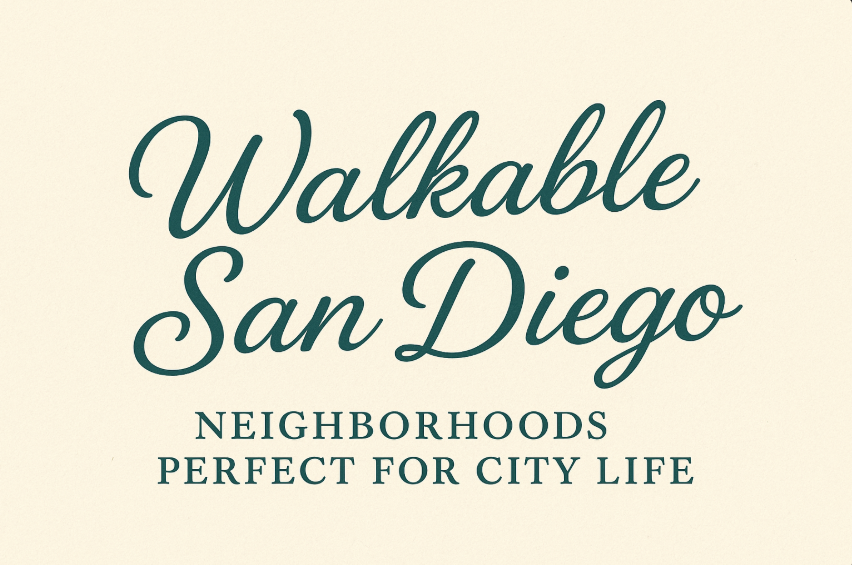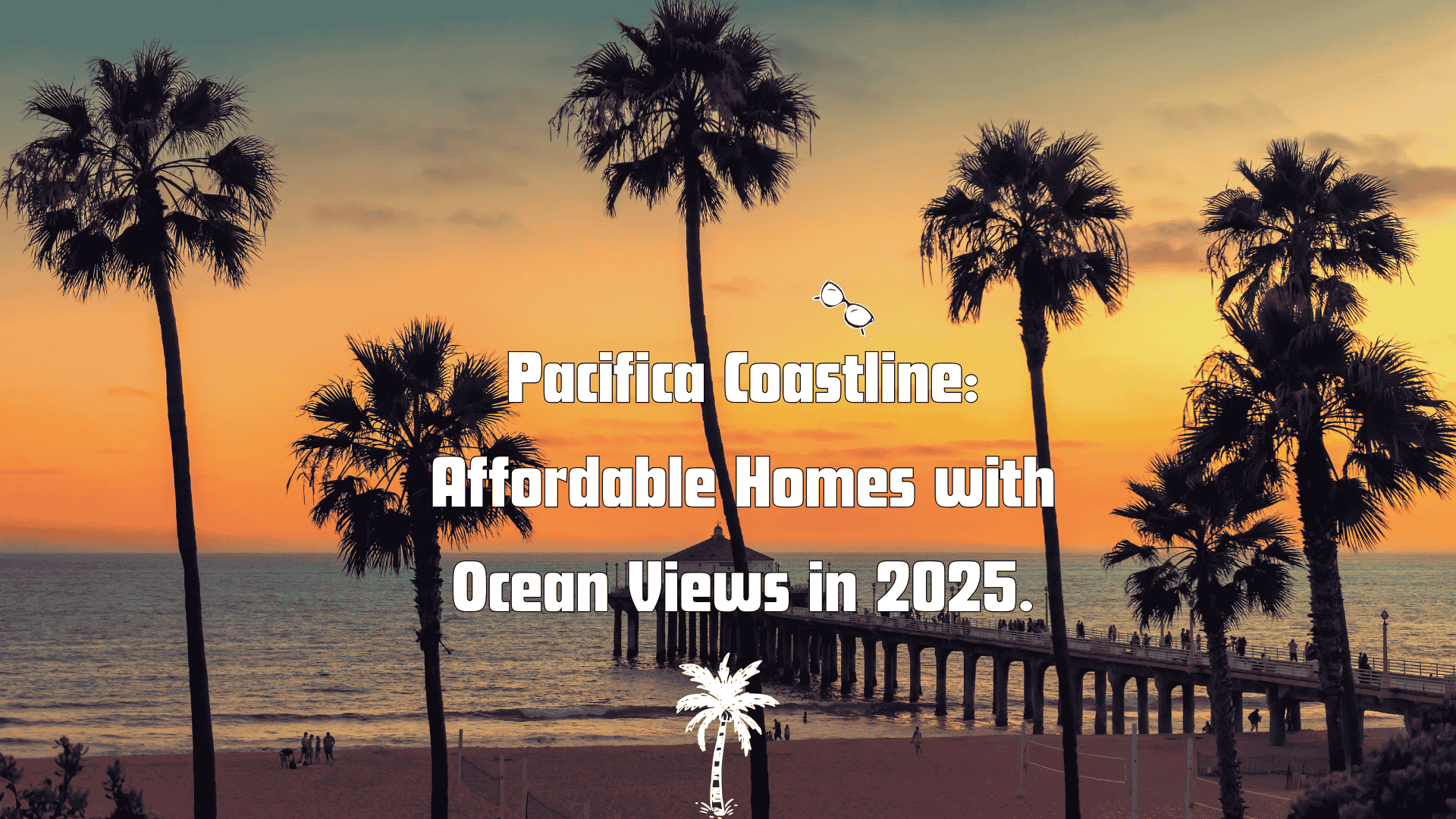Introduction
When the world shifted almost overnight into remote work, the Bay Area housing market was never going to be the same. The epicenter of tech innovation, where long commutes to gleaming corporate campuses were once the norm, has been reshaped by Zoom calls, Slack threads, and kitchen tables doubling as conference rooms.
What began as a temporary adjustment during the pandemic has evolved into a long-lasting lifestyle transformation, and it’s written across the Bay Area’s neighborhoods, home prices, and even the dreams families carry into open houses.
This isn’t just about square footage and mortgage rates. It’s about how people want to live, work, and belong in a region that has always attracted dreamers.
Buyer Priorities: The Rise of Home Offices and Flex Space
For decades, proximity to work was the single most important factor when buying a home in the Bay Area. The closer you were to San Francisco, Palo Alto, or San Jose, the higher the price, and the greater the prestige. But today, the conversation has shifted. Instead of shaving 20 minutes off a commute, buyers are more interested in whether the house has space for a dual desk setup, a converted garage office, or even a quiet nook that can be transformed into a Zoom-friendly background.
The result? Demand for homes with flexible layouts has surged. A once-forgotten den or basement suddenly feels like the most valuable square footage in the listing. The dream of a backyard office shed, equal parts whimsical and practical, is now top of mind for buyers with creative visions of blending work and home life.
Leaving the San Francisco Core: Suburbs and Coastal Towns Beckon
For many years, San Francisco was the jewel everyone wanted to be near, despite the rising cost of living and small apartments with limited natural light. But remote work has loosened the city’s magnetic pull.
It’s not so much a rejection of the city as it is a rebalancing. People still love San Francisco’s energy, culture, and food, but they’re willing to trade daily access for fresh air, a bigger backyard, and a mortgage that buys more than 700 square feet.
Neighborhood Winners: Walnut Creek, Marin, and Santa Cruz
Some neighborhoods are emerging as the clear winners in this reshaped housing landscape.
Walnut Creek has seen a surge in demand, with its family-friendly vibe, good schools, and access to both BART and hiking trails. For young couples starting families, it offers that sweet spot between city accessibility and suburban calm.
Marin County remains timeless but has become even more attractive for remote workers. Rolling hills, redwoods, and communities like Mill Valley and San Rafael provide not only space but also a lifestyle rooted in wellness and balance. It’s not just about owning a home, it’s about walking out your door into nature.
Santa Cruz, once thought of primarily as a surf town, has become a full-fledged relocation hot spot. With tech workers able to log in from anywhere, why not do it with an ocean breeze and the sound of waves nearby?
These shifts speak to something deeper than just location. They reflect a collective yearning for environments that support not only productivity but also joy and connection.
Condo vs. Single-Family: Changing Demand Patterns
The ripple effects of remote work are especially visible in the debate between condos and single-family homes.
Condos, once attractive for their convenience and proximity to urban centers, have faced softer demand in certain parts of the Bay. Shared elevators and limited private outdoor space suddenly feel less appealing when people are spending most of their hours at home.
Meanwhile, single-family homes have gained momentum. A backyard means children can play freely while parents take calls. A spare bedroom means an office or even a personal gym. For many, it’s not just about real estate, it’s about dignity and comfort in daily living.
That said, condos are not fading away. For young professionals who still want to live in vibrant urban cores, they remain a gateway into ownership. But the balance has shifted, and the premium once paid for being steps from downtown may not feel as justifiable when remote life offers freedom to choose.
Lifestyle Moves: Outdoor Access and Family-Friendly Areas
The Bay Area has always been blessed with natural beauty, but remote work has made that beauty part of people’s everyday lives rather than just a weekend escape. Hiking trails, beaches, biking routes, and parks have become deciding factors in homebuying decisions.
Parents talk about wanting their children to grow up where they can ride bikes on quiet streets or play soccer on local fields without the constant roar of city traffic. Young professionals talk about decompressing from work with a sunset walk rather than battling through rush hour.
It’s not just about the house anymore, it’s about the lifestyle the neighborhood makes possible. That’s an emotional shift as much as it is a practical one.
Market Impact: Rentals, Prices, and Future Trends
Of course, these personal stories add up to major market impacts.
Rental demand in San Francisco has cooled compared to pre-pandemic highs, while suburban rents have strengthened. Home prices in areas like Walnut Creek and Santa Cruz have seen upward pressure as more buyers compete for limited inventory.
But there’s nuance. Tech layoffs and economic uncertainty add complexity. Interest rates influence what buyers can afford. And while many people are leaving the city core, there are still those who will always crave urban vibrancy. The future may not be one-directional but rather a balance, with some returning to the city while others carve out new suburban or coastal lifestyles.
One thing is certain: the notion of home as both a sanctuary and a workspace is here to stay. That truth will keep reshaping the Bay Area housing market for years to come.
Conclusion: More Than Real Estate, It’s About Belonging
The story of remote work and housing isn’t just about statistics or market reports. It’s about people searching for belonging in a new era.
Remote work didn’t just give people flexibility in how they earn a living. It gave them permission to imagine new ways of living altogether. And in the Bay Area, one of the most dynamic real estate markets in the world, that imagination is rewriting the map, neighborhood by neighborhood, dream by dream.
To support your journey, here are some recommended reads:
Remote Work and the Future of California’s Housing Market- https://reschool.com/remote-work-future-california-housing-market/
The Rise of remote work and how it effects Bay Area real estate.- https://www.theeastbayagent.com/blog/the-rise-of-remote-work-and-how-it-effects-bay-area-real-estate/
How remote work is reshaping the local housing market- https://www.mv-voice.com/news/2023/04/29/how-remote-work-is-reshaping-the-local-housing-market/
Bay Area home sales are cooling — but AI-bolstered San Francisco is heating up- https://www.sfchronicle.com/realestate/article/housing-market-home-san-francisco-21018197.php








Leave a Reply